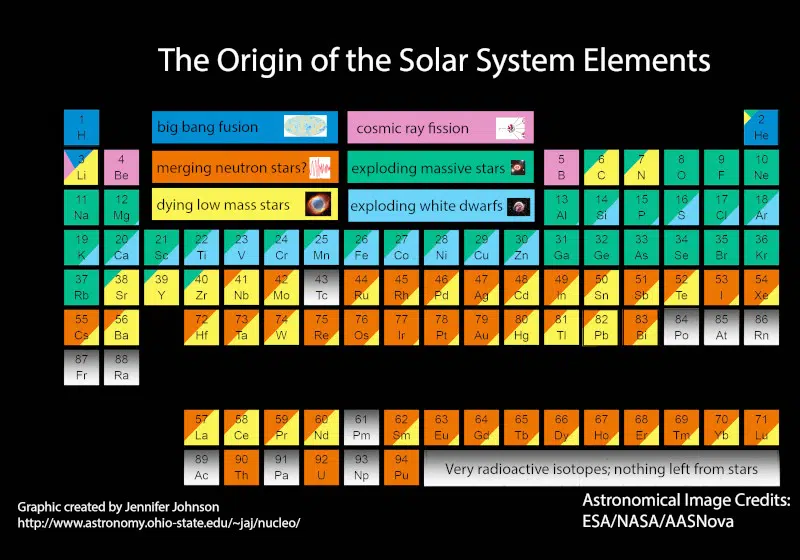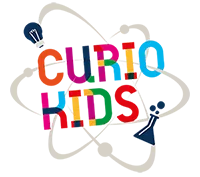
The elements that compose us did not appear by magic. The origins are diverse … but all from space. Are we made of star dust ?
What are we made of?
Chemists, that is, scientists who study the matter and how it is transformed, have identified the different chemical elements that make up humans and the objects around us. Thus are well-known hydrogen (H), calcium (Ca) making up bones, carbon (C) making up diamonds, or gold (Au) with which we make jewelry.
These elements, the chemists gathered them in a table known under the name of the Periodic table of Mendeleev, of the name of its inventor.


An atom
The smallest constituent of matter. The atom is made up of protons, neutrons, electrons.
The Big Bang
The gigantic explosion at the origin of the Universe.
Mendeleiev
Russian chemist, author of the Periodic Table of the Elements.
The element that makes us the most is hydrogen, symbolized by the letter H. This element is the most present in the universe and was produced during the Big Bang, 13.8 billion years ago. The other elements or atoms that make up us come from the explosion or death of ancient stars after the creation of the universe, or from cosmic rays.
An astronomer named Carl Sagan once said: Nitrogen from DNA, calcium from our teeth, iron from our blood, carbon from apple pie were made from the collapse of stars. So we’re made of star residue.
Our origins in the table of elements?
To get a better idea of where the ingredients in humans come from, Jennifer A. Johnson, an astronomer at Ohio State University, picked up the Periodic Table of the Elements and assigned a color to the elements according to their origin.
This Table of Elements shows the 6 processes of the Universe at the origin of the elements of our body:
- The big bang
- Fission by cosmic rays
- The fusion of stars called neutrons
- The explosion of heavy stars (supernova)
- The death of light stars
- And the explosion of stars called white dwarfs

A chemical element
It is a concealment technique that animals use to escape their predators. They blend into their surroundings to give the illusion of disappearing.
By looking at this table, we understand that elements like oxygen (O), magnesium (Mg) and sodium (Na) are the results of the explosion of massive stars called supernova. A phenomenon that occurs at the end of the star’s life when it has burned all of its fuel. The energy released into space then allows the production of chemical elements in a process called nucleosynthesis.
Atoms like carbon (C) and nitrogen (N) come from end-of-life stars called white dwarfs.
Weird elements like Boron (B) and Beryllium (Be) are the results of very high energy particles called cosmic rays. These cosmic rays travel at a speed close to that of light.

Camouflage
It is a concealment technique that animals use to escape their predators. They blend into their surroundings to give the illusion of disappearing.
The fission
It is the division of the nucleus of an atom into two.
Astronomer Johnson decided to present this table to the world because the version presented by Wikipedia contains errors.

Are we made of stardust? The answer is yes. And to be more precise, we can tell you that we are composed of 97% of star substances. This is what the researchers of the Sloan Digital Sky Survey say.dans leur étude.

The fusion
It is when the nucleus of several light atoms combine to form a heavier atom.
Supernova
It is the explosion of a big star and which releases a lot of light and energy.

